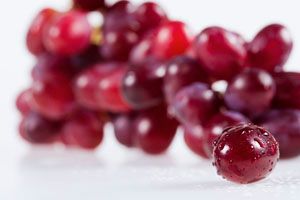Bugs Boost Wine Aroma
A new strain of the enzyme ?-glucosidase isolated from the microbial strain Aureobasidium pullulans (Sp? ?-gl) improves the aroma of wine, according to a team of Brazilian researchers.1 Published in Appl. Biochem Biotechnol., the study indicated that the Sp? ?-gl strain functioned over a wide range of pH levels, had two peaks of optimum temperature and was tolerant to ethanol.

A new strain of the enzyme ß-glucosidase isolated from the microbial strain Aureobasidium pullulans (Sp– ß-gl) improves the aroma of wine, according to a team of Brazilian researchers.1 Published in Appl. Biochem Biotechnol., the study indicated that the Sp– ß-gl strain functioned over a wide range of pH levels, had two peaks of optimum temperature and was tolerant to ethanol.
The aroma of wine is made up of volatile organic compounds (VOCs) and enzymatic treatment can release VOCs bound to sugars in wine to increase the aroma. One key class of flavouring compounds, glycosides, specifically terpenes (linalool, geraniol and nerol), are bound to sugar within the wine. Hydrolysis by enzyme treatment can free the sugar, releasing free terpenols. A significant increase of the level of free terpenols (linalool, geraniol and nerol) was identified using gas chromatography–mass spectrometry (GC–MS), validating the use of Sp– ß-gl in the improvement of wine aroma.
Scientists and winemakers have studied the microbial ecosystem within wine for some time. Societies of microbes exist within wine, and the relationships between different strains can be studied within this medium. These relationships are important to winemakers because they can change the composition and taste.
Traditionally, ß-glucosidase derived from fungus was used to improve aroma, however, this can result in the hydrolysis of anthocyanins producing aglycones, which are potentially toxic. Therefore, new strains of microbial enzymes for wine production are always in demand.
Reference
1. M. Baffi, T. Tobal, J. Lago, M. Boscolo, E. Gomes and Roberto Da-Silva, Appl Biochem Biotechnol, DOI: 10.1007/S12010-012-9991-2 (2012).
Analytical Challenges in Measuring Migration from Food Contact Materials
November 2nd 2015Food contact materials contain low molecular weight additives and processing aids which can migrate into foods leading to trace levels of contamination. Food safety is ensured through regulations, comprising compositional controls and migration limits, which present a significant analytical challenge to the food industry to ensure compliance and demonstrate due diligence. Of the various analytical approaches, LC-MS/MS has proved to be an essential tool in monitoring migration of target compounds into foods, and more sophisticated approaches such as LC-high resolution MS (Orbitrap) are being increasingly used for untargeted analysis to monitor non-intentionally added substances. This podcast will provide an overview to this area, illustrated with various applications showing current approaches being employed.




